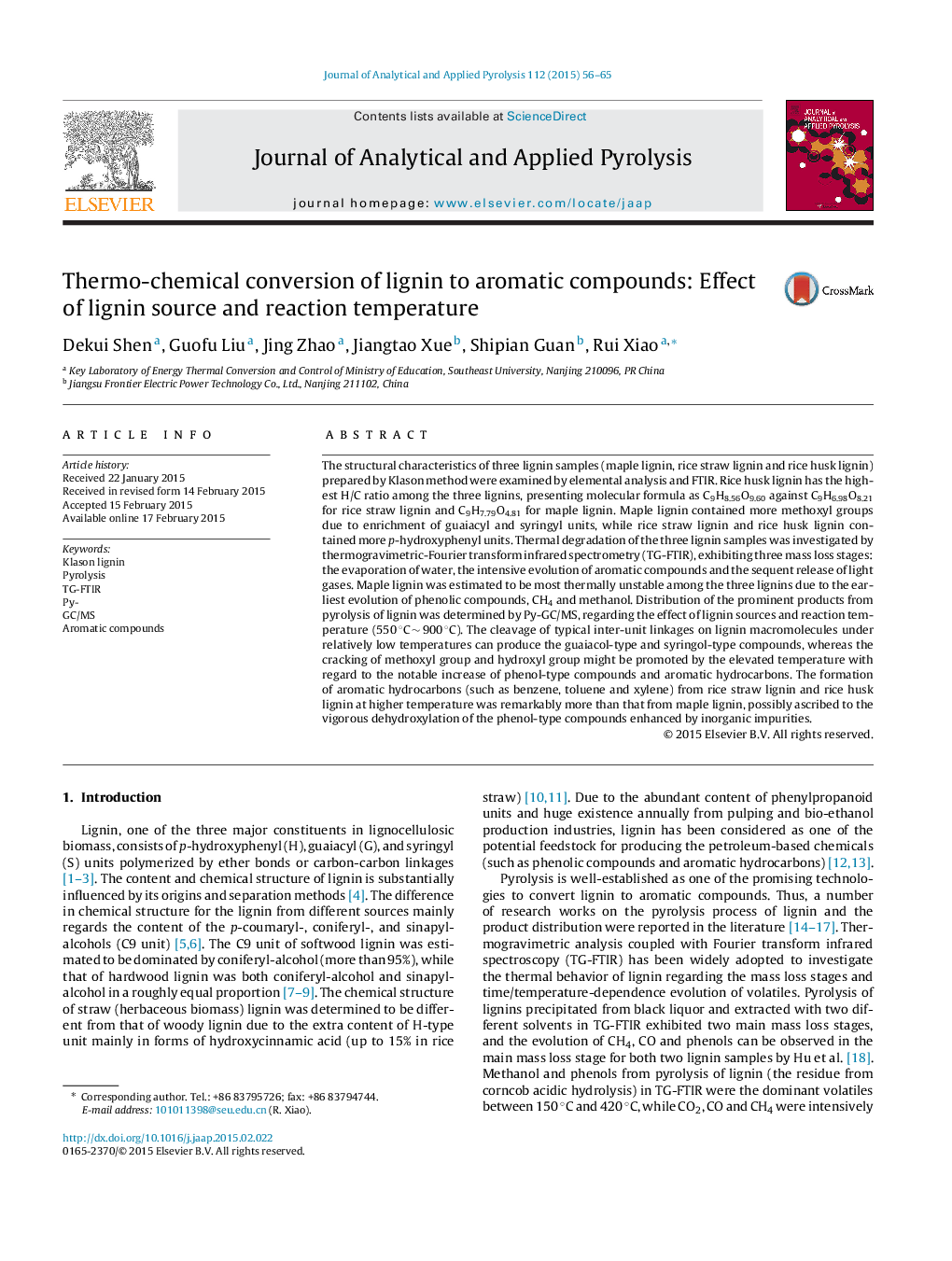| Article ID | Journal | Published Year | Pages | File Type |
|---|---|---|---|---|
| 1197217 | Journal of Analytical and Applied Pyrolysis | 2015 | 10 Pages |
•Structural characteristics of three lignin samples were identified by elemental analysis and FTIR.•The main mass loss stages along with evolution of volatiles of lignin samples were examined by TG-FTIR analysis.•Distribution of prominent aromatic compounds from pyrolysis of different lignin sample was investigated by Py-GC/MS.
The structural characteristics of three lignin samples (maple lignin, rice straw lignin and rice husk lignin) prepared by Klason method were examined by elemental analysis and FTIR. Rice husk lignin has the highest H/C ratio among the three lignins, presenting molecular formula as C9H8.56O9.60 against C9H6.98O8.21 for rice straw lignin and C9H7.79O4.81 for maple lignin. Maple lignin contained more methoxyl groups due to enrichment of guaiacyl and syringyl units, while rice straw lignin and rice husk lignin contained more p-hydroxyphenyl units. Thermal degradation of the three lignin samples was investigated by thermogravimetric-Fourier transform infrared spectrometry (TG-FTIR), exhibiting three mass loss stages: the evaporation of water, the intensive evolution of aromatic compounds and the sequent release of light gases. Maple lignin was estimated to be most thermally unstable among the three lignins due to the earliest evolution of phenolic compounds, CH4 and methanol. Distribution of the prominent products from pyrolysis of lignin was determined by Py-GC/MS, regarding the effect of lignin sources and reaction temperature (550 °C ∼ 900 °C). The cleavage of typical inter-unit linkages on lignin macromolecules under relatively low temperatures can produce the guaiacol-type and syringol-type compounds, whereas the cracking of methoxyl group and hydroxyl group might be promoted by the elevated temperature with regard to the notable increase of phenol-type compounds and aromatic hydrocarbons. The formation of aromatic hydrocarbons (such as benzene, toluene and xylene) from rice straw lignin and rice husk lignin at higher temperature was remarkably more than that from maple lignin, possibly ascribed to the vigorous dehydroxylation of the phenol-type compounds enhanced by inorganic impurities.
